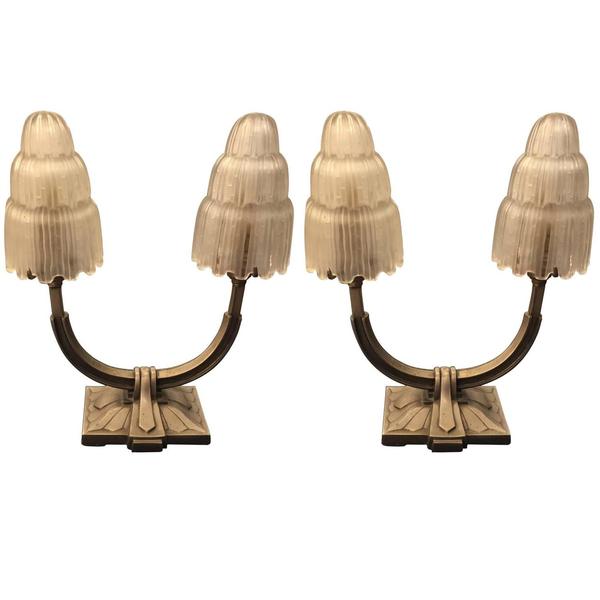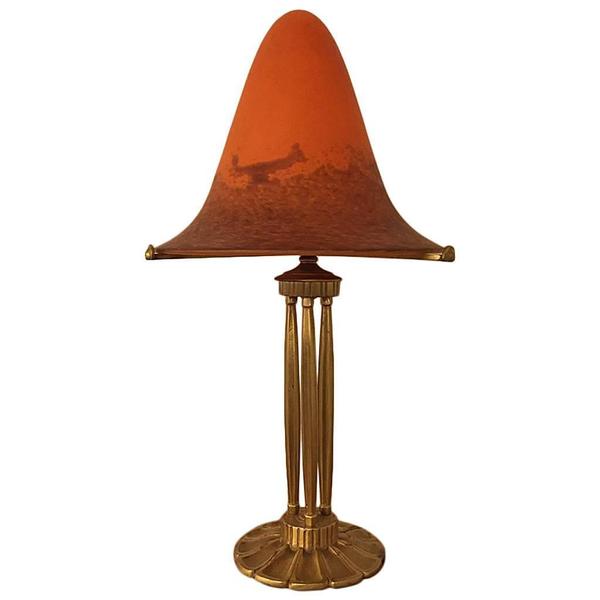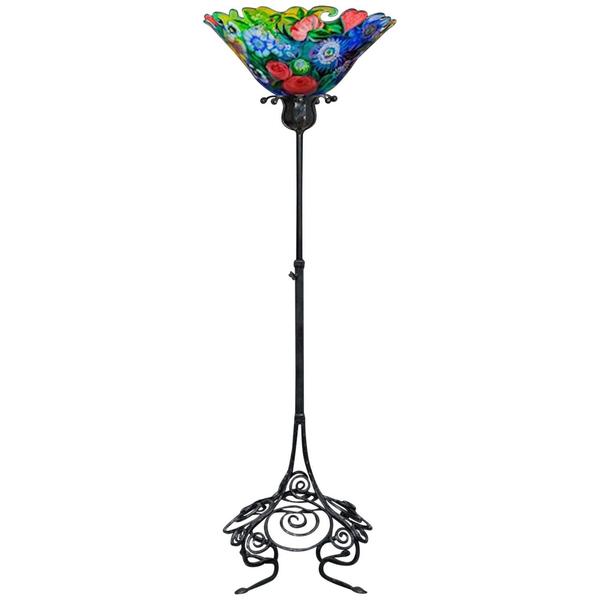Blog
Le Corbusier, World Heritage Buildings and their Influence on Art Deco 0
In the last couple of decades, Art Deco has seen massive return to popularity, partly spurred on by the lavish, opulent set designs of TV series like Downton Abbey and film adaptations of The Great Gatsby and other popular books from the era.
As we've shown in our last several posts, it is possible for anyone to add a touch of Art Deco into their home and, with a bit of effort, to turn it into an inspired homage to a bygone era steeped in glamor.

Notre-Dame du Haut, Ronchamp, France. Image © Gili Merin
But how important is Art Deco's contribution to art, architecture and design? Is it just a phase we're going through? A bit of retro chic to make us feel nostalgic? The UNESCO World Heritage Committee doesn't seem to think so.
In 2015, ten of Frank Lloyd Wright's buildings became the first ever modernist buildings to be nominated by the USA for UNESCO protection, joining the likes of Yellowstone National Park, Monticello and the Statue of Liberty as sites recognized to be of cultural or physical importance.
On July 17th this year, seventeen buildings designed by one of Art Deco's most well-known icons and detractors, modernist architect Le Corbusier, were named World Heritage Sites. The buildings in question span the globe and include such gems as the National Museum of Western Art in Tokyo, Japan, the Maison Guiette, in Antwerp, Belgium and Notre-Dame du Haut, in Ronchamp, France.
Le Corbusier's works embody the notion of art and design as purely functional, while representing their own unique, stark beauty and there is a lot the aspiring Art Deco aficionado can learn from his style.
Coining the Term
Firstly, it's interesting to note that Le Corbusier is widely credited with being the first person to use the term Art Deco while writing about the 1925 Exposition Internationale des Arts Décoratifs et Industriels Modernes in his journal, L’Esprit nouveau.
Strangely, though, even though his name is inextricably linked with the movement, he was pretty opposed to the lavishness of decoration that Art Deco would embrace over the coming years. He preferred functionality, brutally pared-down lines and minimalist, standardized homes.
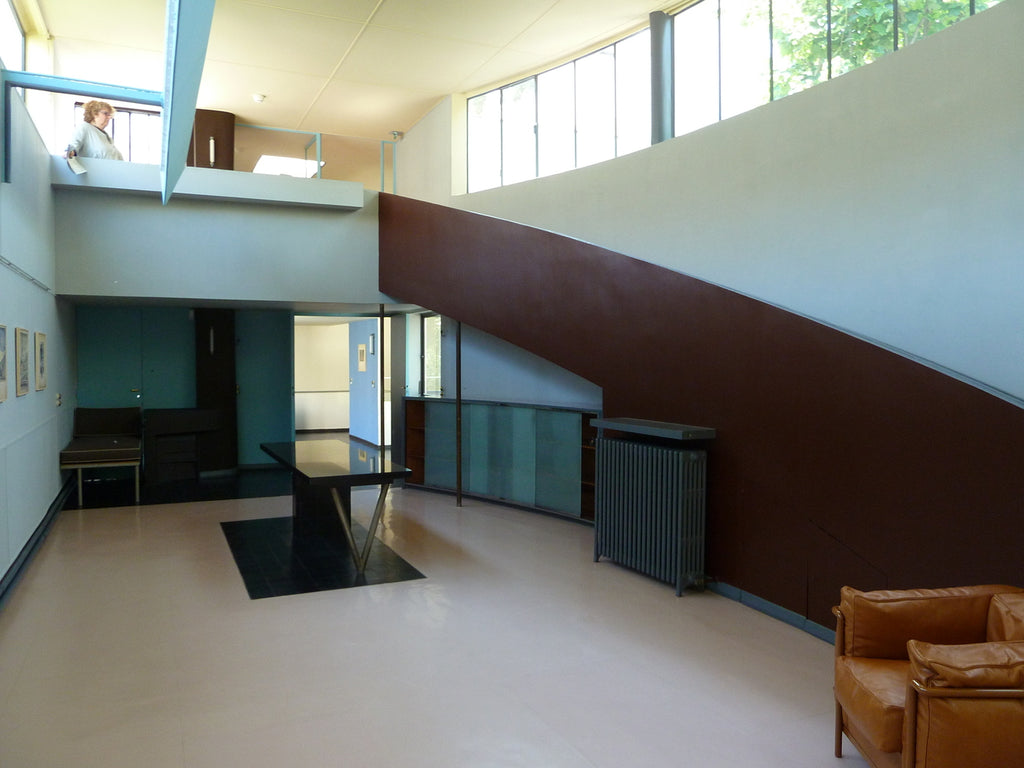
Maison La Roche, Paris, France. Image © Flickr user pov_steve. Licensed under CC BY-NC-ND 2.0
Minimalist Inspiration
While we love the opulence that is possible with Art Deco pieces, the aspiring Art Decorator can draw inspiration from the idea of minimalism as a way to highlight certain well-chosen items.
For example, if your living room is furnished with simple, minimalist sofas and tables, a matching pair of classic Art Deco table lamps, one or two strategically placed statuettes or a stylish mirror will stand out and draw attention to themselves.
Choosing function over form can also help you on your Art Deco journey. Seeking furniture items with clean lines, smooth edges and minimal decoration can help you create a simple, yet elegant canvas onto which you can later add more decorative items as you find your preferred, unique Art Deco style.
Of course, Le Corbusier didn't spend all his time creating fascinating and lasting buildings. He is also famous for having created some of the most enduring furniture designs known to modern art. They are classically beautiful, stark yet comfortable creations that have inspired hundreds of furniture designers since and can most certainly inspire you to experiment with form, function and the places where they meet.
- Matthew Pillet
Keep Your Lights Shining Bright 0
A 1-2-3 guide to cleaning and caring for Art Deco chandeliers, light fittings and lamps
Bronze
So you've finally chosen and installed your Art Deco lighting. You're surrounded by the soft, gentle glow of sconces, ceiling lights and table lamps that reflect your love for this fantastic decor art form.
But, like everything else, they will get dusty and dirty over time and cleaning them may take a little more care than ordinary light fittings. This step-by-step guide will help you take care of your lights and keep them shining.
Step 1: Know your materials
Glass and Silvered Bronze
Art Deco as a design form drew its influences from all over the world and, as a result, its materials came from every conceivable available source - glass, metal, wood, bone, ceramics and fabric could all quite happily coexist in one piece.
One thing you won't find a lot of in genuine Art Deco is plastic, as most polymers only came into use after World War II, but you may find one or two pieces made of Bakelite.
When buying cleaning products to use on your Art Deco pieces, make sure you are buying the appropriate products - pewter cleaner is no good for wood, while wood polish could wreck your beautiful hand-painted glass shade.
If in doubt, ask the seller or an antiques expert to help you identify the various materials.
Step 2: Careful cleaning
Glass and Copper
The easiest way to keep your lights clean is to dust them regularly. Using a soft cloth, wipe them down gently. Don't use a duster, because all the dust will just fly into the air to settle back on the fittings minutes later.
Even with regular dusting, you will still need to occasionally give your pieces a thorough cleaning. Once every six months to once a year should do it, unless you live in a particularly dusty or smoggy area.
Before washing any part of your lamp, such as the glass, crystal or ceramic parts, check it thoroughly for cracks, chips or other damage - especially in the glaze on ceramics. It is very difficult to get such cracks properly dry and this could cause all kinds of further damage.
Make sure you spend some time gently cleaning all the corners, crevices and nooks where grime can accumulate. Use soft cloths, q-tips or very soft-bristled brushes.
Double-check whether wooden parts are varnished or raw. They may need oil rather than polish. If you use oil, stick with oil; if you use wax, stick with wax. Don't switch between the two, as this can cause cloudiness and build-ups.
Step 3: Don't DIY
Painted Glass and Hand-Forged Iron
When the time comes to take down your enormous crystal and pewter chandelier to individually clean all 500 pieces, or when your hand-painted one-of-a-kind sconces are looking a bit dull and you want to give them a wash, don't.
The same goes for those ceramic pieces with the cracked glaze we talked about earlier, or the carved bone filigree piece with thousands of pin-prick holes.
When it comes to the more specialized pieces, if you have even an ounce of doubt, it's better to leave it to the professionals. Genuine Art Deco pieces are usually quite pricey and unique, so it's worthwhile knowing one or two expert cleaning services to help you.
Make sure they really know the style and don't be afraid to ask them for references - and to contact the references! And also feel free to ask them about maintenance between the annual big clean. They will offer the best and most accurate advice.
- Matthew Pillet
- Tags: art deco ceiling light chandelier cleaning french art deco interior design lamp lighting painted glass sconce stained glass
The Evolution of the Mid-Century Modern Chandelier 0
Ok, first off, don't swing from the chandeliers, ok? It's dangerous and you're going to damage a really great piece of lighting. And that, as far as we're concerned, is inexcusable. Would Don Draper do it? The answer is no.
Now we got that out the way... Your quintessential mid-twentieth century home was a place of smooth lines, clear colors and design inspired by the atomic age.
It was where form and function lived in matrimonial bliss with the help of a little mood lighting and a decanter of single-malt Scotch.
Speaking of mood lighting...
Adjustable lighting
Function was - and still is - of primary importance with Mid-century Modern design and even more so with lighting. Lamps, sconces and ceiling fittings that could be moved and adjusted to suit the occasion were sought after, and the classic chandelier found an entirely new form.
Light fittings that were decorative enough to be stylish, yet small enough to fit into a regular living room became popular, and chandeliers and ceiling lights became a functional objet d'art.
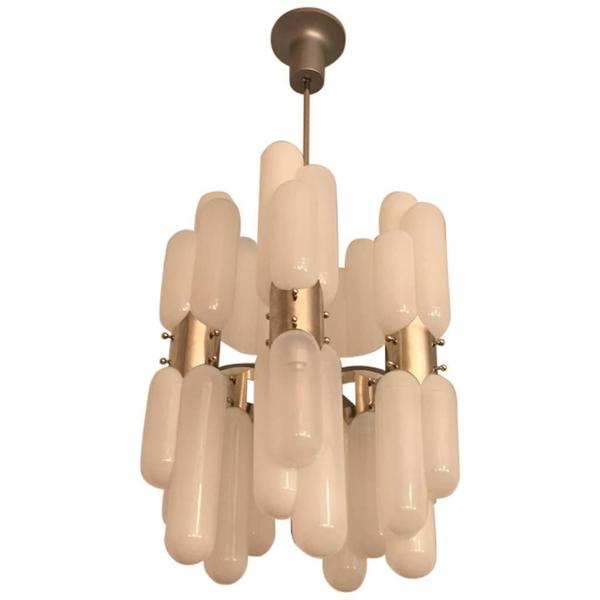
The ordinary and the opulent
Of course, not everyone was living in a neat little suburban home. Some were making big money in booming new capitalist industries like advertising, or taking part in the Space Race or doing their best to climb the social ladder following WWII's devastating effect on the world.
Across the pond in England, many of the social structures were breaking down and the nobility falling on hard times even as the common man rose.
Much the same was happening in the US, with baby boomers raking in the cash that their parents were so sorely missing during the depression, making a better life for themselves and their children, living the American Dream.
Why not, in those situations, show off a little wealth, splurge a little here and there? And while your furniture was there to be moved on a whim, able to quickly adapt to your shifting moods and circumstances, spending a little cash on a fixture like lighting... well, why not? And so much the better if you could celebrate the atomic age at the same time.
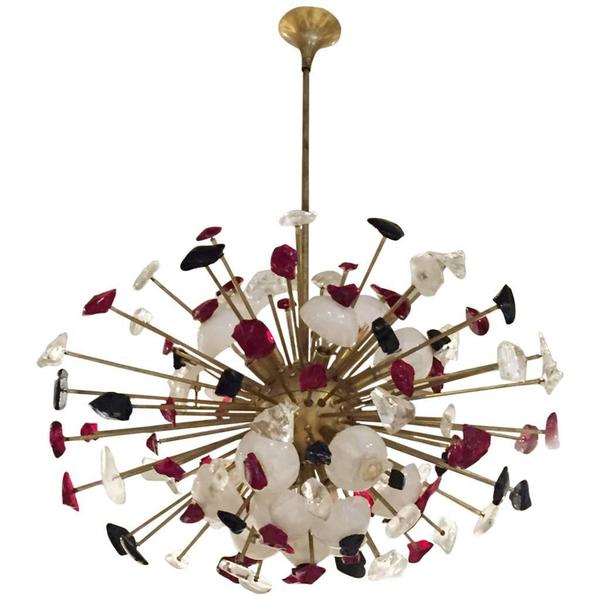
The TV Factor
Television was also becoming big news in the 1950s. The perfect home was being showcased in comedy shows and dramas alike, the ideals of the age upheld in glorious black and white.
Theme pieces also became de rigeur, with popular culture slowly creeping into design. This would, of course, pave the way for Andy Warhol's later pop art movement, but for the time being, it was simply fun to play around with television and movie inspired themes.
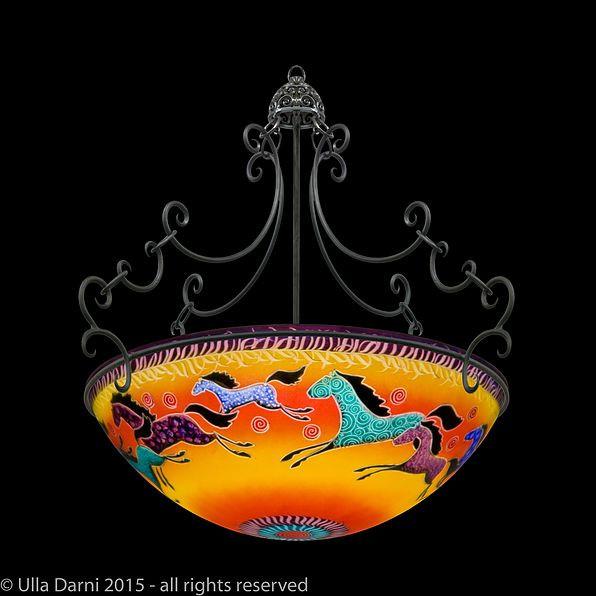
I've said it before - lighting is one of the easiest ways to introduce an element of design style into a room, or to really enhance and round out an area decorated in your favorite style.
Just a flick of a switch, and your Mid-century Modern chandelier is going to let everyone know where your decor heart lies.
- Matthew Pillet
A Brief History of Art Deco Chandeliers 0

Art Deco is certainly a style on its own, one that stands out among the various styles of the twentieth century and one that persists as a viable decor option even today.
In the same way, chandeliers are a decor and design item all to themselves. Any home can certainly have perfectly adequate and even beautiful lighting without one, but a chandelier brings a unique touch of style to a room, anchoring its decor in a way no other item can.
From simple to ornate...

When they made their appearance in medieval times, chandeliers were simple wooden crosses to which candles could be affixed and which could be transported from room to room.
Over time and as artisans developed new techniques in metal work, glass blowing, crystal cutting, chandeliers became more ornate, larger and more intricate. Of course, this also meant they became more expensive and therefore only afforded by the rich, or appearing in larger churches and cathedrals.
Chandeliers quickly became synonymous with wealth and status, something to aspire to. Stately homes' ceilings would virtually groan under the weight of glass, crystal, metal and candles and later gas-fired and eventually electric chandeliers.
... and back again

Right up until the early twentieth century, this was the status quo... and then came along our favorite decor movement which, naturally, turned everything on its head.
Yes, the ornate and stately chandeliers found new life in Art Deco styles, but simpler, more modern and streamlined designs also made their appearance. Here were chandeliers that could fit into more ordinary homes and lend them a touch of opulence and style without literally taking over the room.
These paved the way for the Mid-century Modern low-hanging single-fitting light fixtures and the enormous variety of home chandeliers we see today. But of course, a special place in our hearts will always belong to these pioneers of design and lighting style.
If you want to add some Art Deco chandelier action to your home, take a few things into consideration.
Size matters
Larger rooms can, of course, accommodate larger chandeliers, but bear in mind the height of the ceiling, not just the floor area. The last thing you want is your guests banging their heads on your lovely lighting.
For a smaller room, consider something like this French Art Deco Modernist Ceiling Light Chandelier, which is gorgeous and true to the style, but won't dangle in your dinner.

Material world
Art Deco is Art Deco is Art Deco, right? Well, no. As with any design movement, there are sub-styles, items that work together and items that clash.
Especially if you're going the whole hog, it pays to pay attention to the materials you're using and trying to work out which work together and which fall flat. By contrast, you may not want to overdo it on one type of material.
For example, if your room is feeling a little heavy on the polished wood items, consider something like this incredible pressed glass chandelier from the Verrerie des Hanots.

Above all, have fun with your Art Deco stylings. The design movement represented a new era in design, a movement away from the past and into the future, so don't be afraid to experiment with it and make it your own.
- Matthew Pillet
- Tags: art deco ceiling light chandelier french art deco interior design lighting
How to Plan a Fourth of July Party, Mid-Century Style 0
Monday, July 4th is just around the corner and if you haven't planned your party yet, you should get started.
What better way to celebrate America's independence than with a lavish, Mad-Men inspired, Mid-century Modern style party? Nothing says mid-summer freedom quite like finger foods, delicious cocktails, flared skirts and paper napkins.
The decor

If you've decorated your home in mid-century modern style, so much the better. If, however, it's still a work in progress, try to lay your hands on any vintage decor items, like platers, glassware, punch bowls and the like.
If you can find a few mid-century modern authentic or inspired throw cushions, you can add a touch of the era to your party area.
The outfits

If you're going to have a mid-century modern party, you really should get everyone to dress to theme.
Have some fun with it and pick a specific theme: choose a decade - the 1950s or 60s; a movie or TV series from the era - like I Love Lucy or Psycho; a favorite book like Catcher in the Rye; or a dance party in the noble tradition of 1950s dance TV shows.
Of course, you could throw a Mad Men-themed party and see just how many Don Drapers you can fit in one living room.
The food

One of the favorites of 1950s and 1960s parties were finger foods, making it super easy to snack while chatting and mingling - and also making clean-up a whole lot easier. Get era-authentic with deviled eggs, bits of hotdog on cocktail sticks, chips with various onion or bean dips and every kind of jello-based snack you can imagine.
The drinks

Anyone who watched even a couple of episodes of Mad Men knows that cocktails and scotch need to flow freely at any good mid-century party. Show off your mad mixology skills with a variety of cocktails, from Tom Collinses to Mai Tais, Old Fashioneds to Singapore Slings, Martinis to Manhattans... and don't forget the punch bowl!
The swingin' tunes

© Ron Galella Source
The finishing touch on any mid-century modern Independence Day shindig is the music and dancing. There's no shortage of 1950s compilation albums available and it's simply a matter of choosing your style.
Our choice? The Rat Pack, of course! Frank Sinatra, Dean Martin and Sammy Davis Jnr, with a little Harry Belafonte thrown in for fun..
- Matthew Pillet
Living the American Dream: Three Mid-century Modern Celebrity Homes 0
Hollywood's love affair with Art Deco is well known, yes, but there's nothing more American than Mid-century Modern. It's a style that embodies everything about the American Dream and it suits every kind of home, from a one-room apartment to a magnificent mansion.
It's also a style beloved by all kinds of celebrities, from actors to famous designers.
We're taking a look at three magnificent examples of Mid-century Modern style, brought to you by the rich and famous.
James Marsden, Hollywood Hills

Source: Curbed.com
The X-Men star managed to bag a beautiful 1959 house designed by Edward H. Fickett, who also designed such Mid-century Modern Marvels as the Los Angeles Police Academy and Dodger Stadium.
A perfect reflection of the style of the era, this house is full of wide-open spaces and easy flow from room to room - and that's not even mentioning the perfect, true-to-the-era decor.
Our favorite: The dining area and breakfast nook - so quintessentially 1950s and wide-open, inviting guests to make themselves at home.
Top Tip: Spruce up your entertainment area with this iron, bronze and tile dry bar with matching stools.
Corbin Bernsen, Sherman Oaks

Source: Realtor.com
Just last month, veteran actor Corbin Bernsen put his modest Mid-century Modern home on the market.
This 1949 house is surrounded by half an acre of woody open space overlooking the San Fernando Valley and providing awe-inspiring views.
Our favorite: The spacious, clean living area, gently illuminated by a classic round chandelier.
Top Tip: Light up your living area with these Sputnik-inspired wall sconces.
Steven Meisel, Trousdale Estates

Source: Architectural Digest
Trust a designer to take Mid-century Modern Styling to the next level. Steven Meisel made his name with Versace by delving into retro stylings and he pulled no punches when redesigning his Trousdale Estates home in a neighborhood that, at the time, was definitely not considered cool.
Our favorite: This is a tough one, but we're going with the double-up living area with its layers of detail, from the bucket seats to the clean lines, the sunburst mirror to the organic glass.
Top Tip: Embrace the artistic functionality of the era with this Elephant Champagne Cooler.
- Matthew Pillet


